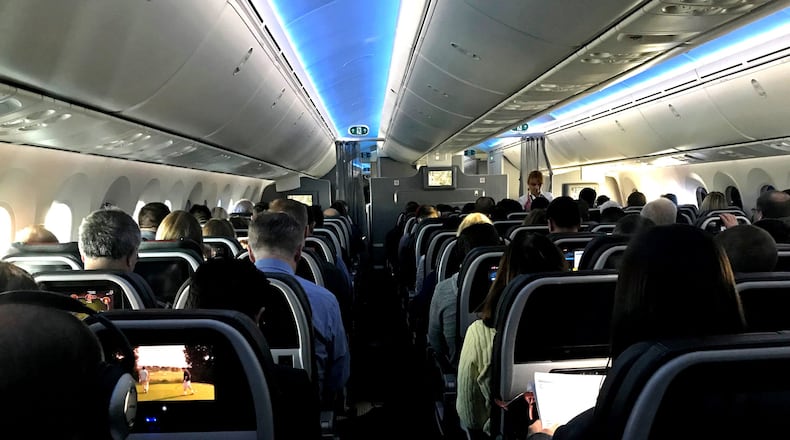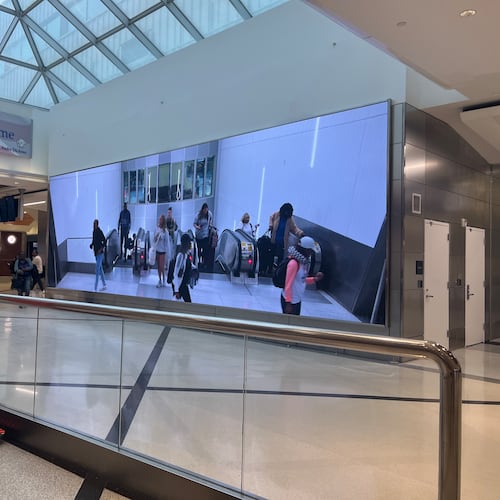To reduce the risk of injuries caused by airline turbulence, the National Transportation Safety Board is recommending improvements including increased use of child safety seats on planes.
That’s because it’s not always possible to hold a child securely on an adult’s lap during turbulence, according to the government agency.
The NTSB also says risks could be lowered if flight attendants are seated with their seat belts fastened during a larger portion of an airplane’s descent. Nearly 80% of injuries from turbulence are sustained by flight attendants, who are more likely to be up and about in the cabin.
Turbulence-related accidents are the most common type of airline accidents, making up about one-third of the total, according to the NTSB, which held a virtual board meeting this week focused on the issue. There were 111 turbulence accidents with at least one serious injury on airlines from 2009 to 2018, such as broken limbs and spinal injuries.
Among passengers, nearly all of those seriously injured during turbulence are not wearing a seat belt, making seat belt use a key factor to reduce the risk.
Infants and toddlers under the age of 2 are not required to occupy their own seats or wear seat belts for takeoff and landing. Parents or caregivers don’t have to pay for an extra seat for a lap child.
“Turbulence-related accidents have occurred with children under the age of 2 in which caregivers have been unable to hold infants securely during turbulence encounters,” said NTSB survival factors investigator Emily Gibson.
The NTSB said there have been no serious or fatal injuries to lap children from turbulence, but there is “potential for a more severe outcome.”
It is recommending the Federal Aviation Administration and airlines work to increase the use of child safety seats, and that the FAA study factors and challenges that affect caregivers’ decisions about using child safety seats for children under age 2 on airlines.
NTSB board member Tom Chapman said experts agree it’s safest for children under 2 to be seated in their own seat with a child restraint system, but the FAA has declined to require that.
“For price-sensitive families traveling with children, the opportunity to avoid purchasing an additional seat is an appealing way to save money,” Chapman said. “If it’s safe, why spend money for an additional seat? Yet many parents have little or no knowledge of the serious risk to which they are exposing their children.”
The FAA, which has a webpage encouraging the use of child safety seats, plans to evaluate the NTSB recommendations.
Keeping seat belts fastened at all times while seated on a plane can reduce the risk of injuries. In 28% of accidents, the flight crew had no warning of turbulence.
The FAA issued a statement saying it “takes NTSB recommendations very seriously and is already taking steps that address” a number of the NTSB’s turbulence recommendations, including encouraging airlines to add handholds or restraints for passengers moving around the cabin, to make more prompt announcements of turbulence and to increase compliance with seatbelt instructions.
Industry group Airlines for America responded that it will “continue to work closely” with the government and others to enhance procedures for safety.
The NTSB also wants to improve reports of turbulence to help pilots, and the FAA said it is working to modernize the system for pilots to report weather conditions for use by other pilots.
Most injuries occur below 20,000 feet near thunderstorms, “so it’s critically important for both passengers and flight attendants to be seated with their seat belts fastened in those conditions,” according to NTSB acting chairman Bruce Landsberg.
About the Author
The Latest
Featured



